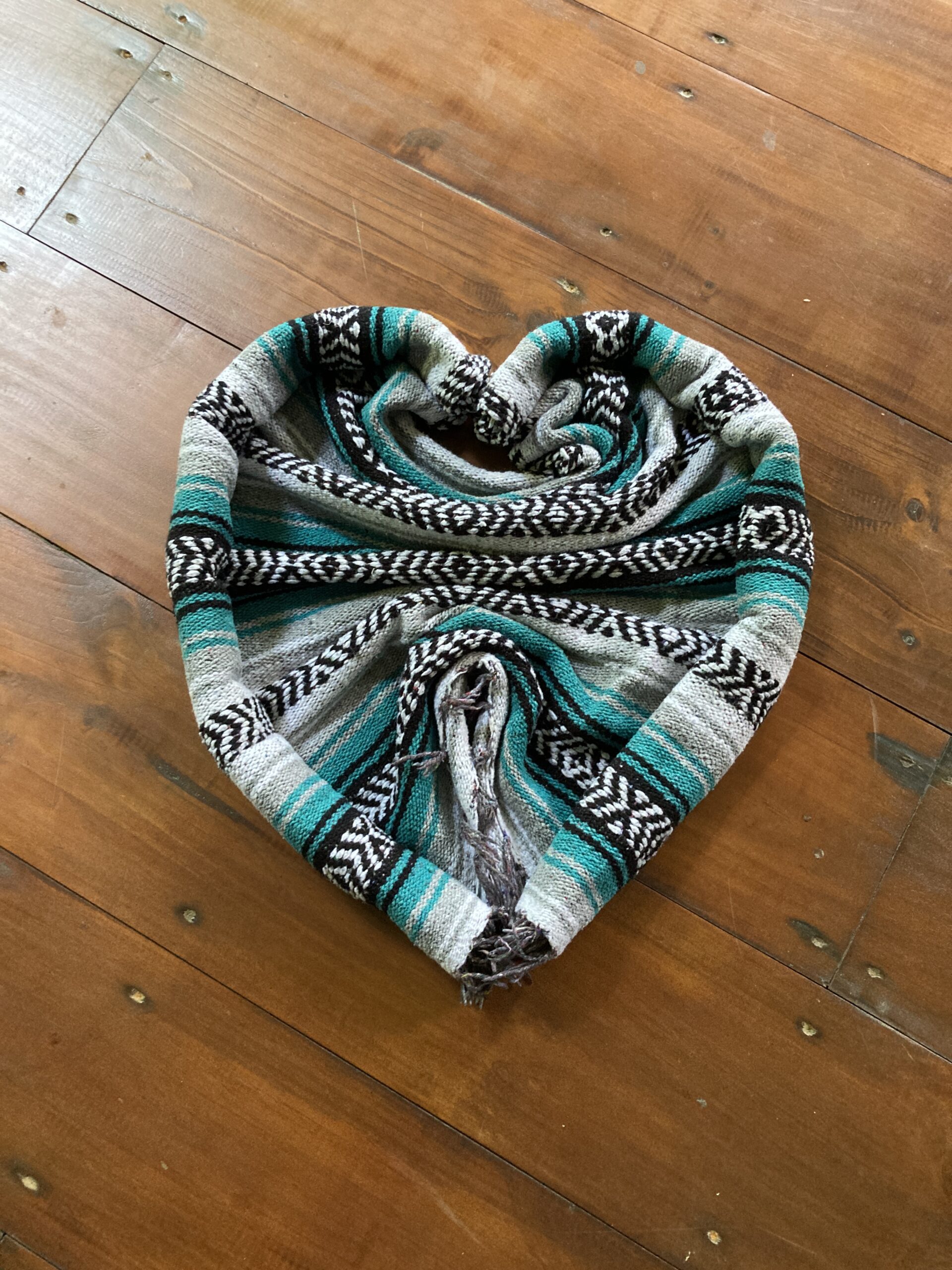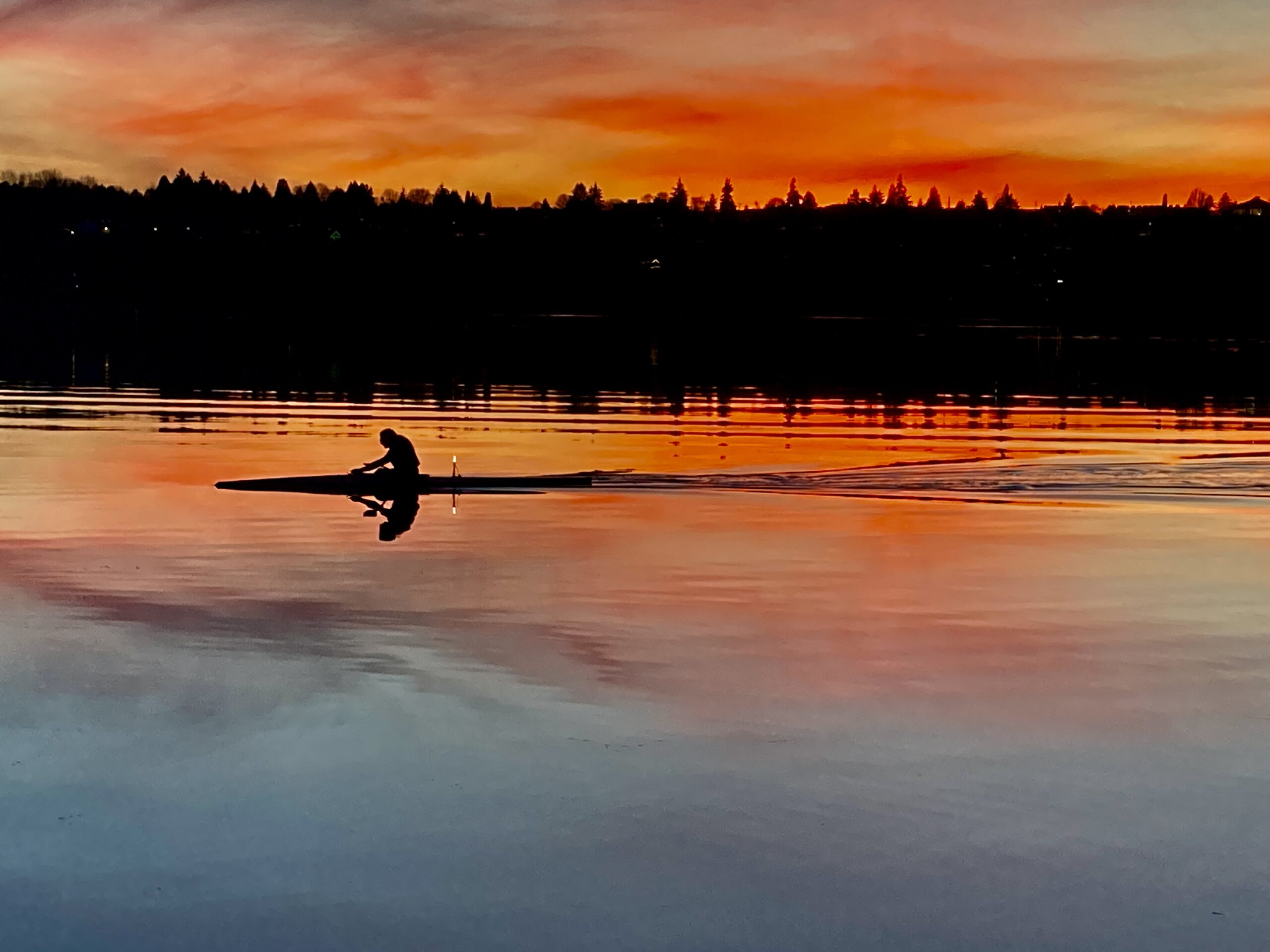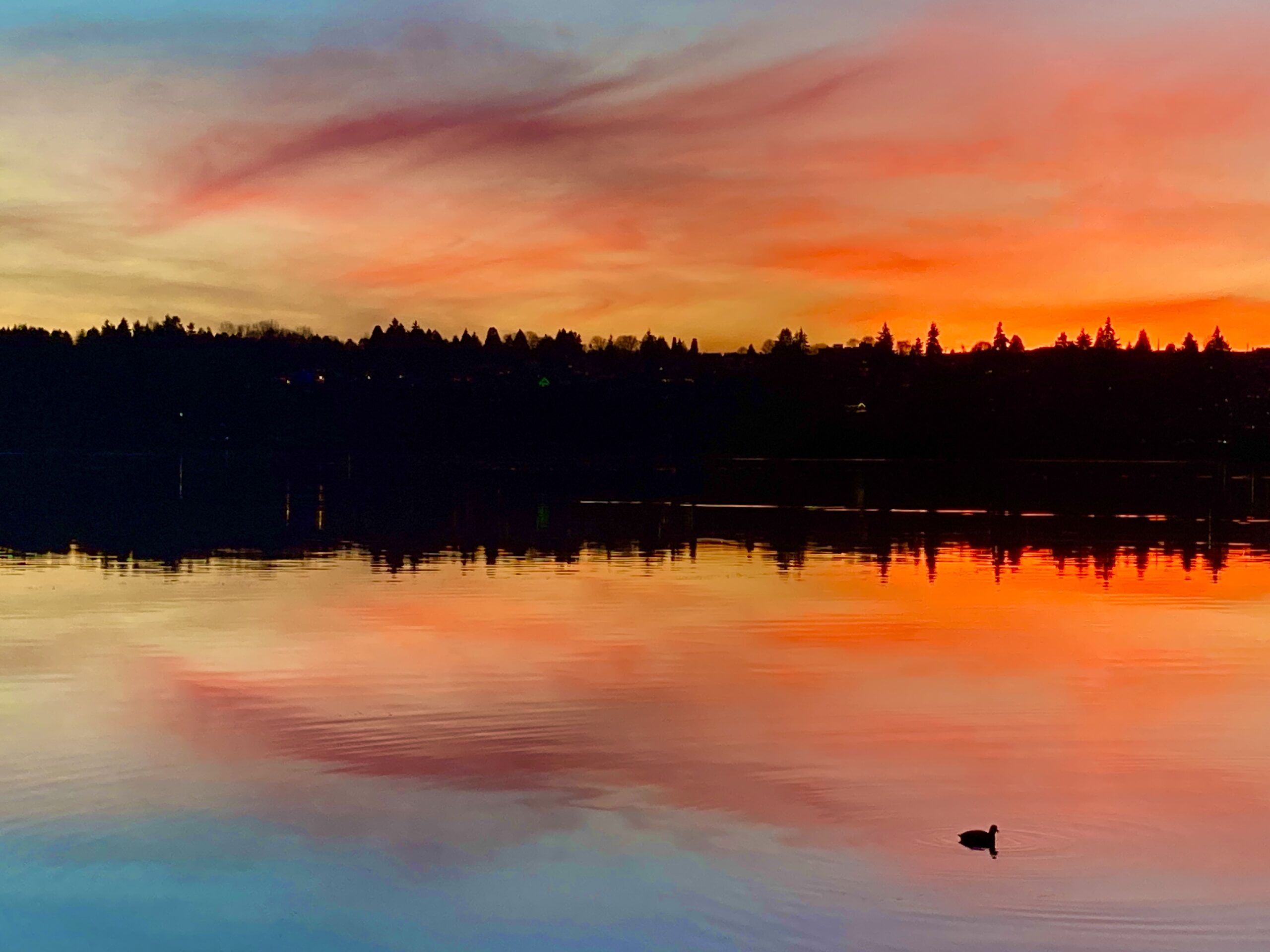Last weekend, I experienced salmon fishing for the first time. The whole experience was much more intense and more of an undertaking than I ever imagined. It would have been much easier to just go over to Whole Foods and pick up a fresh salmon fillet, but I would have missed out on the grand experience of reeling in the big one! I went to the mouth of the Columbia and came home with a 25 pound wild King Salmon.
The fishing took place on Matthew Chandler’s 26 foot boat, a Willie Nemesis. I can’t really compare Matthew to other skippers and guides because this was my first experience salmon fishing, but I can say wholeheartedly that Matthew is a very professional, caring, and knowledgeable all-round good person. His business is Get Hooked NW and I feel lucky to have been guided by him. As an added bonus, his daughter Alvean was on board. Already at 10 years of age, she is a skipper in the making. She helped us hook our bait, change our weights, and disentangle wind whipped fishing lines.
The first day of fishing was not as successful as I imagined it would be. I had a number of “fish 0n” shout-outs, but as I reeled the line in, the salmon would shake themselves loose of the non-barbed smooth sharp hooks. Jayne caught the fish of the day on the first day. That was it. All of us others lost fish. Patience, I learned, is the greatest virtue of a fisherman/fisherwoman. (Interestingly, spell-check doesn’t recognize the word “fisherwoman”.)
Loads of other boats floated nearby at the mouth of the grand Columbia in Astoria, Oregon. We watched in disbelief as man after man (yes, mostly men were out there) pulled in great big thrashing salmon, the men whooping as their nets hauled in the giants of the sea heading up river to spawn. The ultimate optimist, Matthew convincingly explained that we were going to get our fish the next day. The first day, he explained, was practice. The first day was learning how not to reel in too quickly or too slowly, how to “walk the dog” (fishermen’s term for going with the fish, not against it, when pulling it in). He had so much confidence about him so we were not disheartened with the non-existent first day’s catch.
On that first day, when we asked, “Are we doing something wrong?”, Matt smiled and said there’s a fisherman’s superstition that you shouldn’t have bananas on the boat. Some people believe bananas on the boat bring bad luck. “You don’t have any bananas with you, do you?,” Matthew asked us the question with laughing eyes. Um, yes, we did. One person on our boat took the banana business very seriously and urged us to please not pack any bananas the following day!
The next morning, we woke up at 4am. I could sense everyone’s determination to have a successful fishing day. (Just to be sure, we did not pack any bananas with us.) This day, our second and last fishing day, was also the last opportunity to catch a wild King. After that day, only hatchery fish are allowed to be caught. You can tell a hatchery fish because one dorsal fin is snipped. All wild fish with fins intact were to be released the following day and onwards as the wild fish are given more of a chance to make their arduous journey up river to spawn.
Washington fisheries have very strict rules and regulations in place to protect salmon. I am very grateful for this. Where salmon are concerned, Washington fisheries is most successful in managing salmon population (and in deciding how many can be caught) because so much is known about the life cycle of salmon. The average life span of a salmon is seven years and adults weigh over 22 pounds. The environment, unfortunately, has been extremely difficult for the salmon. Salmon need to go upriver to spawn, back to the place where their lives began. How can they go upriver when the rivers are running dry this year? We have had a dearth of rain. Climate change isn’t helping. There was not much snowfall in the mountains last winter and Washington’s glaciers are quickly receding. How will the rivers provide transport for the salmon on their way up to spawn? In addition, salmon need a certain temperature to spawn and the low running river waters are warmer than ever this year.

Astoria, at the mouth of the mighty Columbia River. The day started out with a spectacular sunrise. Unfortunately, the colorful sunrise had to do with smoke in the air! The eastern winds had shifted to the west and the entire west coast of the state of Washington got smothered in smoke from the forest fires that are raging in our state. Climate change and severe drought have brought on the worst wildfires Washington has ever had!
Quite frankly, the concept of fishing is not an easy one for me to reconcile! In my head I think that if I allow myself to eat fish, then I should be able to catch one. And if I can’t kill a fish myself, I should be able to watch it be killed in the most humane way possible. And if I can’t fish and be witness to the whole process, then I shouldn’t eat fish. I forced myself to watch the swift grim-reaper-bludgeon take the valuable life of the salmon. I also watched the process of filleting. I do not eat mammals and have drawn the line at being a pescatarian. Last fall, I was appalled by the photos that appeared on Facebook of my niece, having shot her first deer, standing beside “her” buck, proudly displaying its horned head and doleful dead eyes. Sadly, when I saw the photo of myself holding “my” salmon, I realized I am no different from my huntress niece. My salmon was fiercely full of life before it took my bait. It was swimming freely, just as my niece’s buck was freely roaming the forests, grazing, running, his heart beating out a rhythm until his fateful day. I have to come to terms with these facts and admit I want to fish for salmon again next year and I can only do that if I am not in conflict with the process of taking a precious worthy sea life.
No trip to Astoria would be complete without the Steller Sea Lions. You can smell them and hear them well before you actually see them! They congregate by the hundreds on the docks near the fishing boats in Astoria. They grumble. They growl. They roar. They yell at each other. They bark. All the sea lions we saw on the docks are males! There is, for some reason, a surplus of males and so these single bachelors hang out with each other, cuddling, arguing, loafing about.
The Steller Sea Lions’ habitat is the NW Pacific Rim. Surprising to me, I learned they are on the Endangered Species list. Between 1980-2000, there was a shocking 80% loss in their population! By they year 2000, there were only 55,000 remaining in the world. Strict protective measures were put in place, and today, there are 150,000 Steller Sea Lions. 2340 of the 150,000 hang out in and around Astoria, much to the chagrin of the fishermen. You see, the sea lions and the Astoria fishermen compete for the same food source: salmon.
Why, you may wonder, are the sea lions struggling to survive? In the past, Steller Sea Lions were hunted for their fur. Today, there are other reasons for their struggle to survive. Their dwindling numbers have to with competition for food sources. Changes in the environment have been harsh on the salmon runs, one of the main sources of food for the Steller Sea Lions. One can only imagine how much they have to eat to maintain their weight. A healthy male is 10-11 feet long and the average weight is 1250 lbs! Survival struggles also have to do with getting hit by boats, tangled in fishing lines, eaten by sharks and killer whales. All these factors have put a great amount of stress on the Steller Sea Lions. They have developed Multiple Sclerosis, a neurological auto-immune disease often exacerbated or brought on by various stress factors. You might notice in the photos, above and below, that some of the sea lions are tattooed. This is related to research programs being done to help further understand the human and environmental impacts on the sea lions and the effects of MS on them.

Hundreds of Steller Sea Lions lie on the fishing docks, digesting a feast of salmon. According to a most recent count, there are 2340 Steller Sea Lions in the Astoria area and the mouth of the Columbia. Last year, they sank a dock because they are so darned heavy!!

Matthew’s/Alvean’s dogs, Bonnie and Clyde, came to greet us after the second day of fishing (held by Annalise).
Another thing about fishing is that you will encounter a whole new jargon! I wish I had written down all of the fishing expressions as I heard them. Here is an example of a snippet of conversation between Matthew and a skipper:
“Catch any?”
“We crackered it!”
The second line above is a negative response to the first questions. To “cracker something” means to screw up or to tally something and come up with zero.
“Fran, give your reel a couple turns. You’re smackin’ bottom.”
“Smackin’ bottom” means my hook and bait are dragging the river floor. Another way of putting it is, “We’re a dragon. Reel in.”
“Don’t horse ‘im in. You gotta walk the dog.”
“Horse him in” is to forcefully pull your fish in, with a great risk of losing it. Instead you have to “walk the dog”, which means to follow the fish with your rod, but always keep the line taut. Honestly, I did not master the technique, so perhaps I am describing it poorly. I did look up “walk the dog” on line and was amazed to see loads of You Tube videos on the technique of “walking the dog”. Apparently, the technique varies greatly if you are fishing for trout, bass, salmon, etc. And the technique is varied when you have a fish on or if you are trying to lure the fish to take your bait.
There is a science to fishing and a host of knowledge learned to master the art of fishing. For example, I can hear Matthew saying, “Remember, fish look UP!” or “If you reapply sunscreen, wash your hands before you touch your line! Fish hate the smell of sunscreen.” It takes years to learn the ins and outs of fishing science. I also think that to be a fine fisherperson, you have to start thinking like a fish. I knew Matthew was full-on in fish-mode when I heard him say, “I hate the smell of sunscreen.”
If you are interested in booking a fishing excursion with Matthew Chandler, you will do best to book now for next year. He was booked solid this year and I imagine he is always in very high demand. He is a gem of a guide: Get Hooked NW














The above was an excellent write up!
Matt is a good as it gets in Astoria….if you have never gone on a guided trip, I highly recommend a day or two with Matt..
Even if you have gone, im sure you will still learn a thing or two and have a great experience fishing the mighty Columbia.
Though fishing is best in august, Matt also catches king salmon in the spring(springers) which are actually the best tasting of all the salmon. Id try to grab a date the first week of april with him, book early as these coveted dates usually book out months if not a year in advance.
Wow Fran, what an educational and thoughtful post. I really appreciate the care that goes into your posts, and I loved learning about the fishing lingo and more about Stellar Sea Lions. I’m going to share this with Bryan and Ava, and encourage a family fishing trip with Matthew next year. Thank you so much for sharing this incredible experience.
Another great post, Fran, almost as good as being there. Actually, based on our getting-rained-on-for-4hrs last year – hypothermic ! — and your all-day, 12-hour marathon this year, I was happy to be back here in Seattle. I enjoy casting for trout in the Yakima River on a hot summer day, not so much sitting on any boat that doesn’t have sails. My motto, “never go to a party that you have to swim home from.” All that said, we all got our kings last year and all of you did this year, so success in the end, and it is fascintating to watch Matt do his thing, he really knows what he’s doing out there.
Thanks, Jon! Yes, Matt is the best and he is really good at what he does. Being on the boat was physically very challenging, reeling in the fish equally challenging, but adrenaline inducing! Tough, but I wouldn’t have it any other way. (Well, maybe a bit quicker on the fish catch..but hey, it’s the life of a fisherperson.)